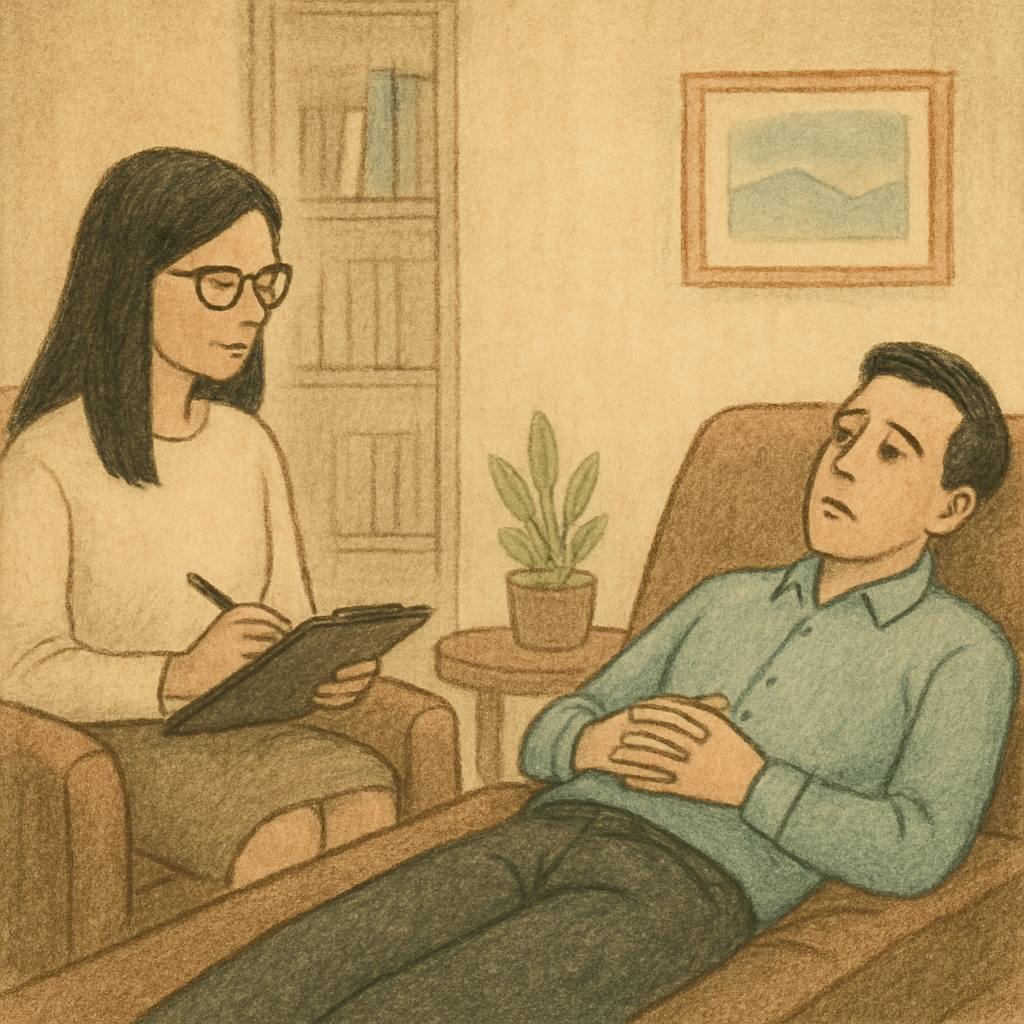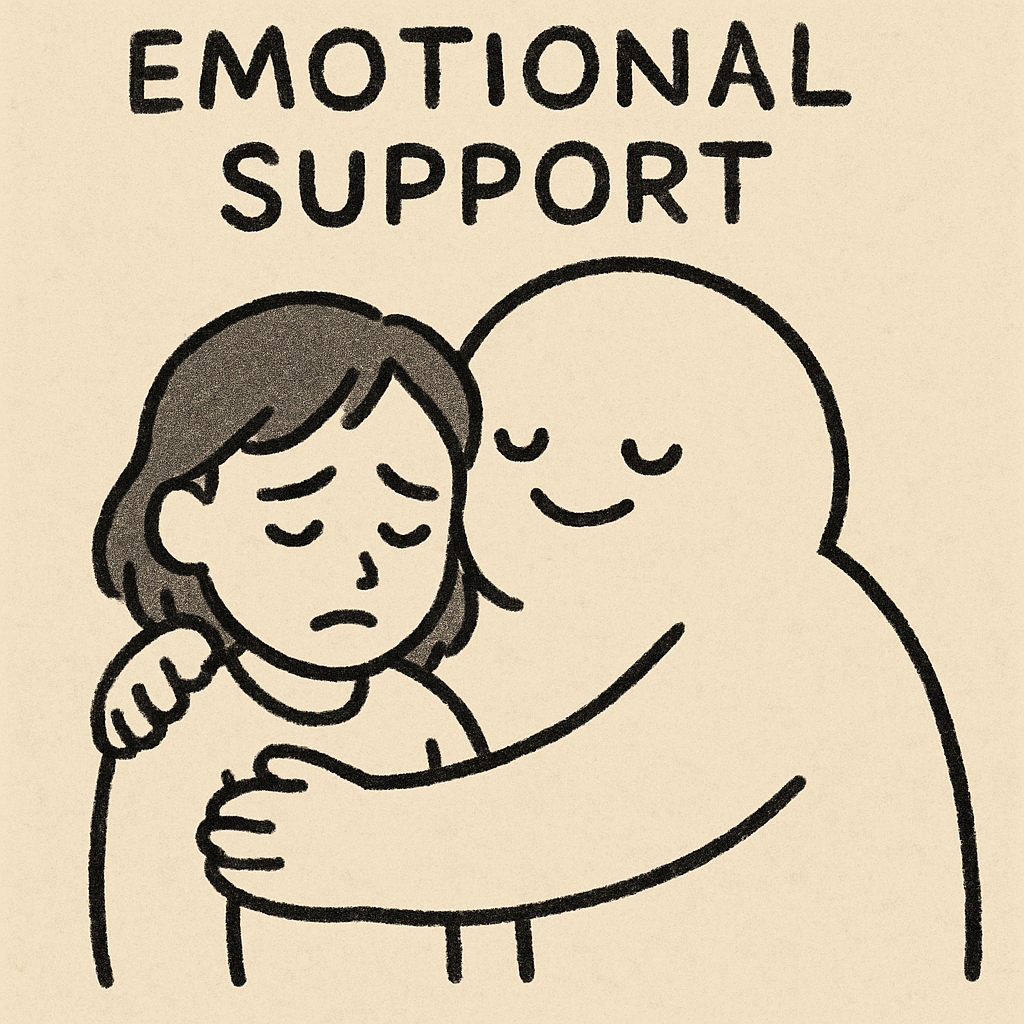In the world of therapy, many concepts contribute to the healing and growth of individuals. One of the foundational principles that therapists often rely on is unconditional positive regard. This concept is central to creating a supportive environment where clients can explore their thoughts and feelings without fear of judgment. It’s a way to ensure that therapy becomes a safe haven, a place where clients can unravel their innermost concerns and work towards personal growth and healing.
Unconditional positive regard plays a significant role in establishing a therapeutic alliance, the collaborative relationship between therapist and client. This alliance is crucial because it forms the bedrock upon which therapeutic work is built. With a foundation of trust and acceptance, clients are more likely to engage deeply in the therapeutic process, leading to more profound insights and more effective outcomes.
 What is Unconditional Positive Regard?
What is Unconditional Positive Regard?
Unconditional positive regard is a term coined by Carl Rogers, a pioneering psychologist in the humanistic approach to therapy. It refers to the therapist’s acceptance and support of a client, no matter what they say or do. This doesn’t mean the therapist agrees with everything a client does, but rather, they accept the person as they are. This acceptance is a powerful form of validation, affirming the client’s inherent worth and dignity.
The Role of Acceptance
Acceptance is crucial in therapy because it provides a safe space for clients to be themselves. When clients feel accepted, they are more likely to open up about their true feelings and experiences. This openness is essential for personal growth and emotional healing. Acceptance also helps to dismantle the walls of shame and guilt that clients may have built around their vulnerabilities, allowing them to confront and process these emotions in a constructive way.
Moreover, acceptance in therapy is not passive. It is an active process where therapists continually reinforce their non-judgmental stance, even when confronted with challenging or uncomfortable revelations. This ongoing affirmation of acceptance helps clients feel continuously supported, encouraging them to delve deeper into self-exploration and healing.
Why is Emotional Support Important?
Emotional support is a key component of unconditional positive regard. When clients feel emotionally supported, they are more likely to engage in the therapeutic process. This support helps build a trusting relationship between the therapist and the client, which is vital for effective therapy. Emotional support acts as a buffer against the stresses of exploring difficult emotions, providing clients with a sense of security as they navigate their inner landscapes.
Furthermore, emotional support in therapy fosters resilience. Clients who feel emotionally supported are better equipped to face setbacks or challenges in their therapeutic journey. This resilience is crucial for sustaining motivation and commitment to the process, even when the work of therapy becomes tough or uncomfortable.
 How Unconditional Positive Regard Promotes Personal Growth
How Unconditional Positive Regard Promotes Personal Growth
Unconditional positive regard is not just about feeling good; it plays a significant role in personal development. Here’s how:
Encouraging Self-Exploration
When clients know they won’t be judged, they are more willing to explore their thoughts and emotions. This self-exploration is a critical step in understanding oneself better and identifying areas for growth. It allows clients to confront parts of themselves they may have previously avoided, leading to greater self-awareness and insight.
Self-exploration, facilitated by unconditional positive regard, often leads to the unearthing of underlying beliefs and patterns that may be influencing a client’s behavior. This awareness is the first step in initiating meaningful change. Clients who engage in self-exploration often discover strengths and resources they were previously unaware of, empowering them to tackle life’s challenges more effectively.
Building Self-Esteem
Clients often struggle with self-esteem issues. By experiencing unconditional positive regard, they start to see themselves in a more positive light. Over time, this can lead to increased self-confidence and self-worth. As clients begin to internalize the acceptance they receive from their therapist, they gradually learn to extend this acceptance to themselves.
Moreover, an increase in self-esteem can have a ripple effect, positively impacting various areas of a client’s life. Improved self-esteem often leads to better relationships, increased assertiveness, and a greater willingness to pursue personal and professional goals. This transformation underscores the far-reaching impact of unconditional positive regard in therapy.
Fostering Change
Change can be daunting, especially when it involves deeply ingrained habits or beliefs. Unconditional positive regard creates a supportive environment where clients feel empowered to make changes in their lives. Knowing they are accepted no matter what gives them the courage to take risks and try new things. This environment of acceptance provides the psychological safety necessary for clients to venture into the unknown.
The courage to change is often bolstered by the therapist’s unwavering belief in the client’s potential for growth. This belief, communicated through unconditional positive regard, inspires clients to envision and work toward a future that aligns with their values and aspirations. As a result, clients are more likely to engage in transformative change processes, leading to lasting personal growth.
Practical Applications in Therapy
Therapists use unconditional positive regard in various ways to support their clients. Here are some practical applications:
Active Listening
Therapists demonstrate unconditional positive regard by actively listening to their clients. This means paying full attention, acknowledging what the client says, and responding with empathy. Active listening shows clients that their experiences and feelings are valued. It creates a therapeutic environment where clients feel heard and understood, which is fundamental to their healing process.
Active listening also involves reflecting back the client’s words and emotions, helping them gain clarity and insight into their thoughts and feelings. This practice not only reinforces the therapeutic alliance but also encourages clients to explore their narratives more deeply, often leading to breakthrough moments in therapy.
Non-Judgmental Attitude
Maintaining a non-judgmental attitude is crucial in therapy. Therapists practice this by refraining from expressing shock or disapproval, even when clients share difficult or controversial thoughts. This approach encourages clients to be honest and open. It assures them that they are in a safe space where they can explore all aspects of their identity without fear of rejection.
A non-judgmental attitude also involves respecting the client’s pace and readiness to confront certain issues. By honoring the client’s autonomy and self-determination, therapists reinforce the client’s sense of agency and empower them to take an active role in their therapeutic journey.
Reflective Responses
Reflective responses are another way therapists convey unconditional positive regard. By reflecting back what the client has said, therapists show that they are truly listening and understanding. This technique also helps clients gain clarity about their thoughts and feelings. Reflective responses can validate a client’s experience and encourage them to elaborate further, deepening their self-exploration.
Additionally, reflective responses can serve as a mirror, helping clients see patterns or contradictions in their thinking. This can lead to new insights and facilitate the process of change. By consistently providing reflective feedback, therapists help clients feel supported in their journey towards self-discovery and growth.
Challenges and Limitations
While unconditional positive regard is a powerful tool in therapy, it does have its challenges and limitations.
Balancing Support and Guidance
Therapists must balance providing unconditional support with guiding clients toward healthier behaviors. This can be challenging, especially when clients engage in self-destructive behaviors. In such cases, therapists need to find ways to support the client while also encouraging positive change. This balance requires skill and sensitivity, as it involves acknowledging the client’s current reality while gently steering them towards healthier alternatives.
In situations where change is necessary for a client’s well-being, therapists must communicate their concerns in a manner that is both supportive and non-judgmental. This delicate balance ensures that the therapeutic relationship remains intact while facilitating the client’s progress towards positive outcomes.
Misinterpretation by Clients
Some clients may misinterpret unconditional positive regard as approval of all behaviors. It’s important for therapists to clarify that acceptance does not equate to agreement with harmful actions. Instead, it means valuing the person despite their actions. This distinction is crucial in helping clients understand the scope and limits of unconditional positive regard.
Therapists can address potential misinterpretations by explicitly discussing the nature of unconditional positive regard and setting clear boundaries. By doing so, they can prevent misunderstandings and ensure that clients receive the full benefits of this therapeutic approach.
Cultural Considerations
Cultural differences can impact how unconditional positive regard is received and understood. Therapists must be culturally sensitive and adapt their approach to meet the needs of diverse clients. This may involve learning about different cultural norms and values to ensure that unconditional positive regard is effectively communicated. It requires therapists to be open to learning and to respect the unique cultural backgrounds of their clients.
Cultural sensitivity also involves recognizing and addressing potential biases that may influence the therapeutic process. By being attuned to cultural dynamics, therapists can enhance the effectiveness of unconditional positive regard and foster an inclusive and respectful therapeutic environment.
Conclusion
Unconditional positive regard is a cornerstone of effective therapy. By providing a non-judgmental, supportive environment, therapists help clients explore their emotions, build self-esteem, and foster personal growth. While there are challenges, the benefits of unconditional positive regard make it an essential tool in the therapist’s toolkit. As clients experience acceptance and support, they are empowered to make meaningful changes in their lives, leading to greater emotional well-being and personal fulfillment.
The practice of unconditional positive regard not only transforms the therapeutic process but also has a lasting impact on clients’ lives beyond therapy. It encourages a deeper connection with oneself and others, fostering a sense of belonging and purpose. As therapists continue to embrace and refine this approach, they contribute to a more compassionate and understanding world, one client at a time.
